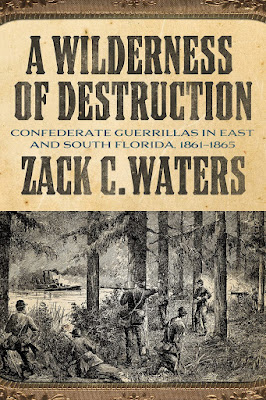Violent Bank Robbery Stuns Peaceful Community
By Robert A. Waters
There are no mountains anywhere close to Mount Dora, Florida. However, it is situated on a plateau 185 feet above sea level. In 1888, surveyors, possibly in jest, named the town after an early settler and its high elevation. The normally peaceful community sits in Lake County. A hundred years after receiving its name, Mount Dora had a population of about 10,000 souls.
At 11:51 A.M., March 20, 1999, a 9-1-1 call crackled in from the Publix grocery store in Mount Dora.
Dispatcher: 9-1-1. Do you need police, fire or rescue?
Caller: Police. There's been a shooting over at the bank at United Southern.
Dispatcher: In Southern?
Caller: Yes. Everybody's running in here screaming, saying there's been a shooting over at the bank.
Dispatcher: Hold on...(internal dialog to police officers) There's been a shooting at United Southern Bank. There's a shooting at United Southern Bank.
(Internal dispatch dialog)
Dispatcher: Did they say how many people are involved?
Caller: I have no idea...people were just screaming and crying.
(More internal dialog)
Dispatcher: Can you stay on the line? Can anyone give you a description? See if anyone can give you a description.
(More internal dispatch dialogue)
(A second voice appears on the line)
Dispatcher: Did you see the shooter?
Second voice: Well, I saw...I walked into the bank, and there was nobody in the lobby. And I heard screams...And there was somebody in the vault...
Mount Dora police officers arrived at the bank within seconds of the call.
It was a placid morning when thirty-one-year-old Fred Anderson, Jr. (pictured below) entered United Southern Bank for the second time in two days. Earlier, he had informed bank employees he was a college student writing a paper on banking and finance, and wanted to learn all he could about the subject. With no reason to suspect treachery, the manager chatted with Anderson for nearly an hour. When he left, staff seemed impressed with the "student."
He came back the next day. Anderson vs State lays out what happened: "Anderson took a second revolver from his mother's house (he had another gun he'd stolen) and headed to USB with donuts and juice, ostensibly to thank the employees for their help the day before. Victims Heather Young and Marishia Scott (pictured below) were the only employees working at the time. After leaving the bank briefly [Anderson] returned with both revolvers, forced Young and Scott into the bank vault, and ordered them to fill a trash bag with money. Then after asking the women who wanted to die first, Anderson began firing both [.22-caliber] revolvers, killing Young and paralyzing Scott. Anderson fired a total of ten shots, nine of which hit the victims."As the robbery and murder was unfolding in real time, Sherry Howard entered the bank with her two children. She saw Anderson in the vault firing multiple handguns, and quickly exited. Anderson had not seen her. She raced to Publix and yelled for someone to call police. Howard later testified she heard Scott yell, "Please don't" or "Please, no." Immediately after that, the witness heard additional gunshots.
After cops arrived, officers spotted Anderson still inside the bank, attempting to remove a VCR containing surveillance video. More officers arrived and arrested Anderson holding a "trash can" containing $75,000.
Paramedics rushed Young and Scott to local hospitals.
Heather Young died while being transported to the hospital. According to court documents, "the forensic pathologist who performed the autopsy on Heather Young testified that Young had a total of seven gunshot wounds. She said that all of Young's wounds could have been fatal, with the possible exception of a wound that had entered Young's chin and exited near the eye. [Another] of the wounds had a pattern of gunpower 'tattooing' around it, which indicated that it had been fired at close range."
Scott had been shot twice. One round hit her in the shoulder. Another struck her neck, severing her spinal cord. She would be a paraplegic for the rest of her life.
The verdict in Anderson's trial was a foregone conclusion. Overwhelming evidence included DNA matches of the victims' blood on Anderson's clothing and shoes; ballistics matches of bullets from one of the guns used in the crime; the killer having been caught at the scene; and several confessions. At trial, Anderson was convicted of the first-degree murder of Young, attempted first-degree murder of Scott, armed robbery, and grand theft of a firearm. The jury unanimously sentenced him to death.
On February 4, 2015, Marishia Scott died of complications from her paralysis. Her death ended sixteen years of hard suffering.
Before being shot, Scott had been at a good point in her life. A "country" girl, she lived on a farm with her long-time partner and fiance, Clint Brighurst. In addition to farming, they raised cattle. One friend told reporters that Marishia was "such a happy person. Both she and Clint are very hard workers, and they were always planning ahead." From 1999 to her death 16 years later, Scott remained a paraplegic.
Heather Young's longtime boyfriend, David Curlow, spoke of romantic trips they'd taken to the Caribbean, of parasailing in Key West, and of spending "quiet evenings in lawn chairs by the lake."
After Scott's death, prosecutors considered charging Anderson with her murder. However, they, along with Scott's family, decided not to take him to trial. Scott has run out of appeals on his death sentence, and the district attorney knew a conviction in Scott's case would open a pandora's box of future appeals.
When will Anderson face the vaunted needle? Who knows? It might be decades. It could be never. Many people realize there's little real justice in America. This case proves the point.






